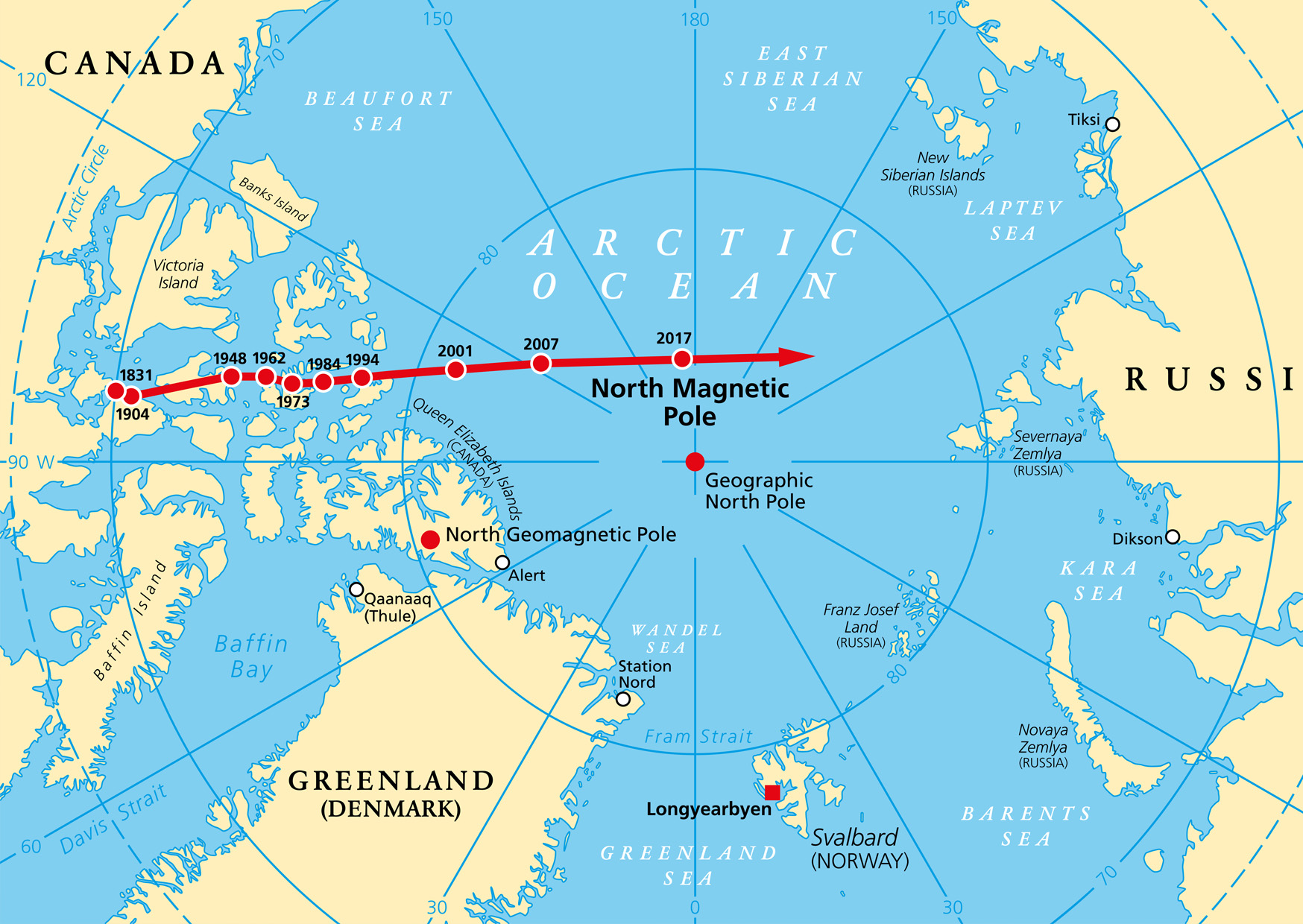The Earth magnetic field
Přečtěte si článek o magnetickém poli Země a poté odpovězte na otázky:
- Kde vzniká magnetické pole Země?
- Kam ukazuje severní pól kompasu?
- Jak se magnetické pole mění v čase?
- Mars má velmi slabé magnetické pole. Proč by nebyl snadný život na jeho povrchu?
- Co je to magnetorecepce?
Earth's magnetic field, also known as the geomagnetic field, is the magnetic field that extends from Earth's interior out into space. The magnetic field is generated by electric currents in a mixture of molten iron and nickel in Earth's outer core. These convection currents are caused by the heat escaping from the core.

Zdroj
As an approximation, we can relate to an enormous bar magnet placed in the center of the Earth (see the picture). The “North geomagnetic pole” actually represents the place, where the axis of the Earth magnetic field meets the Earth surface. It is near the north geographic pole, but not in the same place. Conversely the “South geomagnetic pole” is near the south geographic pole on the southern hemisphere. Notice that the “North geomagnetic pole” is near the SOUTH pole of the Earth’s magnet. So the name “north” is not derived from the magnetic pole of Earth, but from the geographic position.
The North and South magnetic poles are usually located near the geographic poles, but they slowly and continuously move as you can see in the picture. However, at irregular intervals averaging several hundred thousand years, Earth's field reverses and the North and South Magnetic Poles abruptly switch places.

Zdroj
The magnetosphere is the region above the ionosphere that is defined by the extent of Earth's magnetic field in space. The magnetic field is crucial for life on Earth, because it is protecting Earth from the charged particles of the solar wind and cosmic rays. These charged particles have so much energy that they are very harmful to all living organisms. Without this magnetic shield the charged particles would kill all life on the Earth's surface and also strip away the upper atmosphere.
It is interesting that some animals, including birds or cows, can detect the Earth's magnetic field. This is called magnetoreception. The birds use it for navigation during migration. The researchers have found with Google Earth images, that also cows and wild deer tend to align their bodies north–south. The precise mechanism for magnetoreception is still under investigation. The main hypotheses being currently discussed is a chemical compass based on subtle quantum effects in atoms. In the year 2000, a molecule of cryptochrome was proposed as the “magnetic molecule”, which could harbor magnetically sensitive radical-pairs. Cryptochrome is a flavoprotein found in the rod cells of the retina in the eyes of birds and other animal species. The function of cryptochrome is diverse across species, however the mechanism by which it functions is the same: exposure to blue light excites an electron which causes the formation of a radical-pair whose electrons are entangled. This quantum entanglement is essential for the precision in magnetoreception, because the Earth's magnetic field is quite weak.
We, humans, can't detect the magnetic field naturally. So we have to use the compass for our navigation. But that's another story.
Upraveno podle https://en.wikipedia.org/wiki/Earth%27s_magnetic_field.

